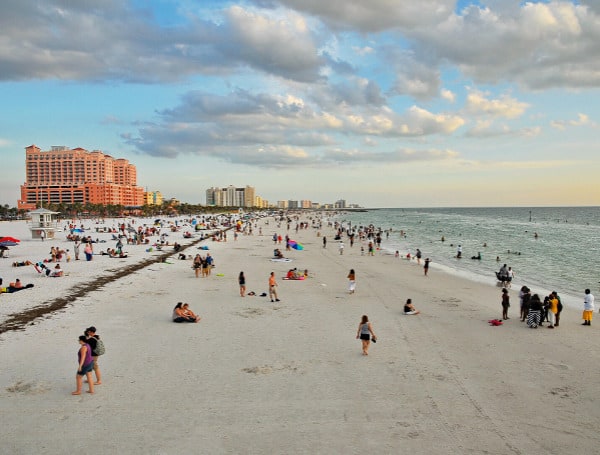International tourism has increased faster in Florida than other parts of the nation but remains below pre-pandemic levels, state tourism officials said this week.
Visit Florida officials unveiled international travel figures from the final three months of 2022 that reflected the continued effects of global inflation, lengthy visa-processing times, and COVID-19 vaccine mandates for foreign air travelers coming to the United States. Full fourth-quarter tourism figures will be released in about two weeks.
Visit Florida President and CEO Dana Young said Thursday the number of overseas travelers to Florida during the quarter topped 2 million.
In the news: China Claims High-Altitude Spy Balloon, Saying It’s “Civilian Research” With Regret
That would be the highest quarterly figure since the last three months of 2019, when 2.6 million overseas tourists came to Florida. The COVID-19 pandemic slammed into the state’s economy in early 2020, with the tourism industry particularly hit hard.
In all, Florida had about 7.02 million overseas visitors in 2022, up 73 percent from 2021 but 28 percent below the 9.801 million in 2019, the new quarterly estimate indicates.
Meanwhile, an estimated 1 million Canadians — itemized separately in terms of international visitors — came to Florida in the fourth quarter, bringing the 2022 total to 2.749 million. By comparison, 4.09 million Canadians flocked to Florida in 2019.
“While there still is a way to go, Florida is significantly outperforming the rest of the nation (in international travel), which is down a whopping 39.9 percent,” Young told members of the Visit Florida Board of Directors during a meeting at the Palm Beach County Convention Center. “So, what we’re doing is working, and we’re going to continue to be focused on this upward trajectory.”
In the news: Republican Councilwoman In New Jersey Murdered In The Street. Cops Seeking Motive
Florida topped the nation in international tourists based on market share, drawing 44.6 percent. New York, which was long the top destination of international travelers, attracted about 22 percent of the market.
“This is a huge strategic advantage that we’ve built from hard work during these difficult years,” Young said. “For the rest of the country, Florida was open, and we have seized on that. So, now our challenge is to maintain these advantages, maintain these market-share wins and not take our foot off the gas.”
Gov. Ron DeSantis this week released a proposed 2023-2024 state budget that seeks $100 million for Visit Florida, double the funding from the current year.
“There’s now an increasing competition from other global destinations that weren’t marketing at all,” Young said. “They were close, but now they’re open and they’re spending a lot of money trying to lure people away from Florida.”
People traveling to Florida from other parts of the U.S. bounced back far more quickly than international tourism. Domestic travelers to Florida went from a record 117.18 million in 2019 to 75.5 million in 2020. Those numbers rebounded to 117.325 million in 2021. Through the first nine months of 2022, the domestic numbers were 11.4 percent ahead of the 2021 pace.
In the news: Florida Gov. DeSantis Tax Plan Ranges From Diapers To Gas Stoves
Jacob Pewitt Yancey, Visit Florida director of consumer insight and analytics, said the agency recently compiled industry numbers showing that overall tourism had a $101.9 billion economic impact in 2021, topping the $96.4 billion in 2019.
Pewitt Yancey said he expected the 2021 total to be around $93 million, based on the drop-off in international tourists, who, on average, traditionally have spent more time and money on vacation than domestic visitors. But travelers from other states have been spending more since the pandemic began.
“Their length of stay increased, depending on which particular types of domestic visitors you’re looking at, sometimes as much as one or two extra nights on average compared to what we saw pre-pandemic,” Pewitt Yancey said. “And their spending increased significantly.”
The overall economic impact figure dropped to $61.7 billion in 2020.
“Obviously, we have a long time to go until we get 2022 (economic impact numbers), but every indication I have is that when the 2022 numbers come in, they are going to be mind-boggling,” Pewitt Yancey said.
Android Users, Click Here To Download The Free Press App And Never Miss A Story. Follow Us On Facebook Here Or Twitter Here.

